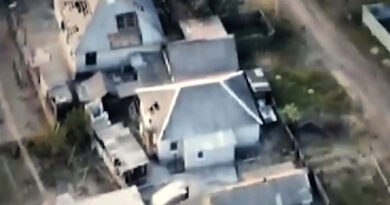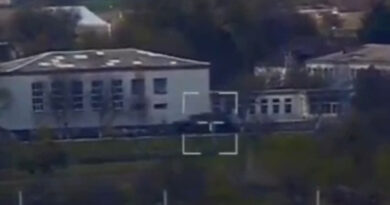Breaking: Ukraines Azov Regiment Counterattacks In Streets Of Mariupol After Defying Russian Call To Surrender
These images reportedly show members of Ukraine’s Azov Regiment counter-attacking in the streets of Mariupol after rejecting a Russian call to surrender.
Newsflash obtained the images from the Azov Regiment early on Monday afternoon (18th April), and they said, in both Ukrainian and English: “The defence of Mariupol continues. Despite the overwhelming forces of the enemy, the Azov Regiment fighters launch [a] counterattack.”
The images, perhaps shot from a drone and which contain scenes that some may find distressing, appear to show a group of soldiers carefully making their way through the bombed-out city’s streets after Russian vehicles are seen pulling into a street. The footage later shows the vehicles to be sporting white ‘Z’s.
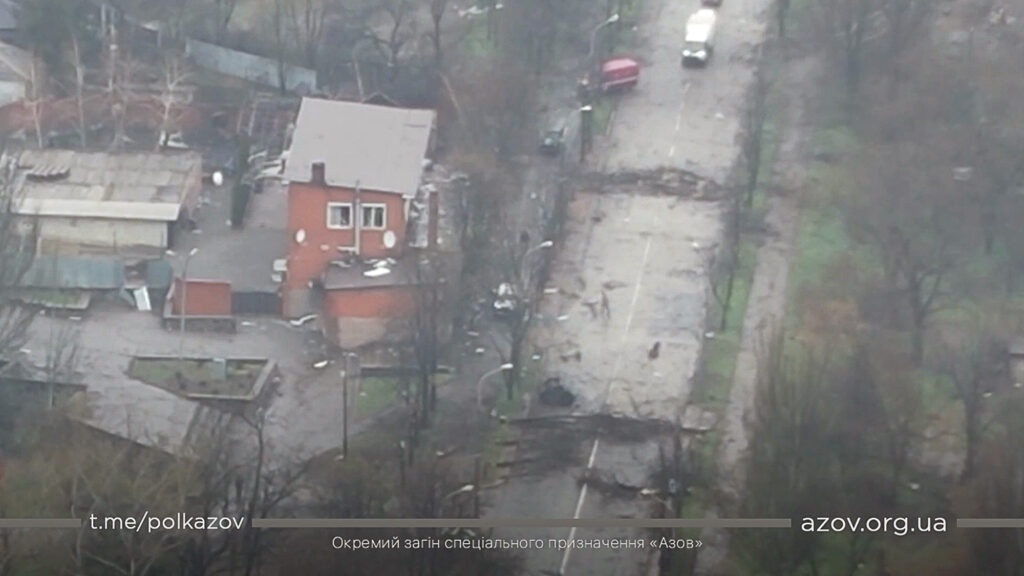
The soldiers can then be seen opening fire, presumably on enemy positions near a red van that arrived with the other vehicles previously.
The soldiers then carefully make their way around the street and approach the van from the side, after having gone around a large building. They approach the van through a garden separated by a wall.
A white ‘Z’ can then be seen daubed on the side of the van, with a green van in front of it also sporting a white ‘Z’, a symbol that has become synonymous with the Russian forces in Ukraine.
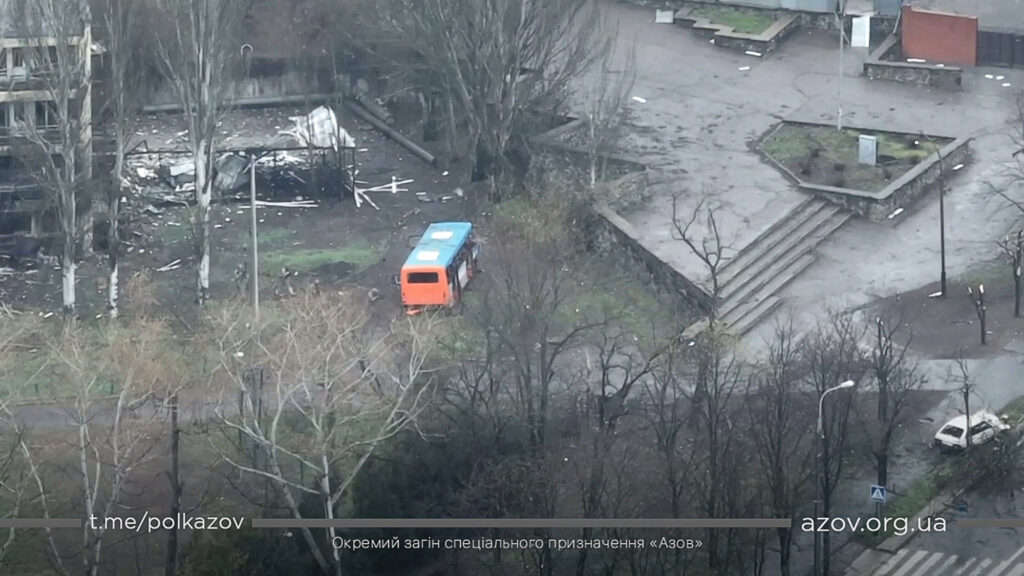
Soldiers that appear to be Russian can be seen lying on the pavement, apparently injured, possibly from the gunfire moments earlier.
One of the soldiers from the Azov Battalion can be seen tossing what appears to be a grenade over the wall before taking a few steps back and preparing another explosive as two explosions are seen.
The soldier approaches the wall again, tossing another grenade over it. Two soldiers can be seen moving, trying to turn over on their side as the grenade falls next to them.
It also detonates, causing a small cloud of black smoke to rise from the pavement, between the wall and the red van.
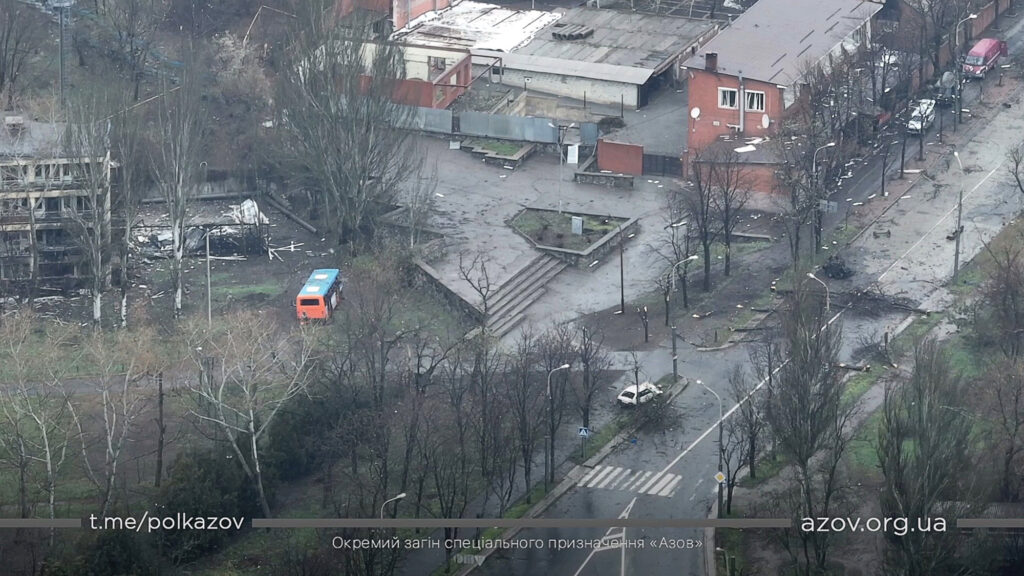
The Azov soldier tosses another grenade over the wall before retreating a few paces.
The camera then shows two other soldiers, apparently Russian, taking shelter behind the red van. Their comrades lie motionless on the pavement next to it, between the vehicle and the wall, as the footage ends.
Newsflash has not been able to independently verify the authenticity of the images obtained from the Azov Regiment.
But the last Ukrainian fighters continuing to resist the Russians in the besieged, south-eastern Ukrainian port city of Mariupol rejected Russian demands to surrender on Sunday, 17th April.
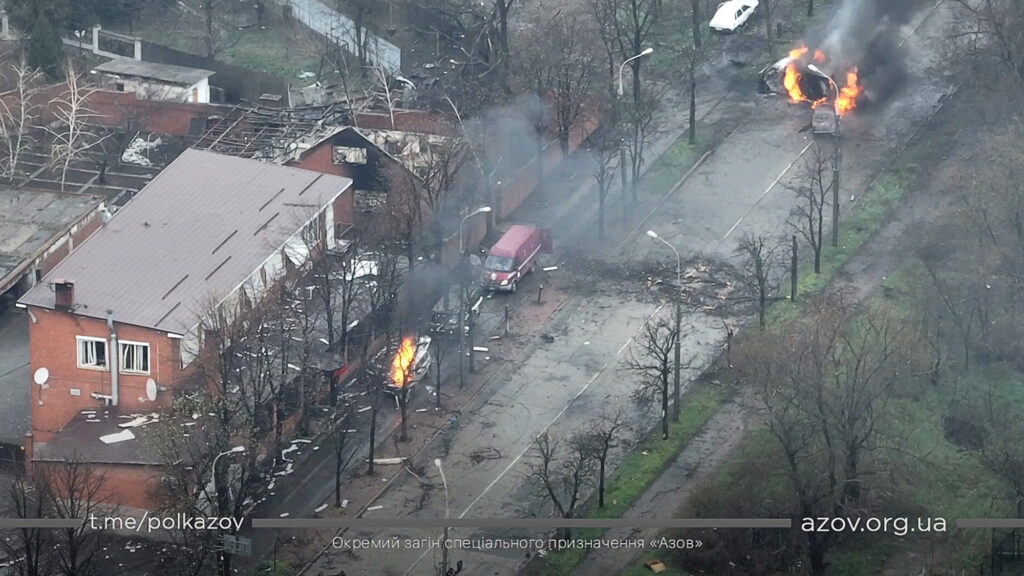
The Azov Regiment is now reportedly entrenched in the Azovstal steel plant, which boasts a significant network of Soviet-era tunnels.
The city of Mariupol has become something of a symbol of Ukrainian resistance to the Russian invasion, which began on 24th February.
The city, in the Donetsk Oblast region, has been virtually destroyed since the Russians began laying siege to it on Sunday, 13th March, according to Ukrainian officials, with over 90 per cent of its buildings either damaged or reduced to rubble.
It is currently unclear how many civilians have died in Mariupol, which had a population of over 400,000 before Russia started its attack.
The city has repeatedly made headlines since the early days of the Russian invasion, after a maternity hospital, a children’s hospital and a large theatre reportedly sheltering civilians were hit in missile strikes.
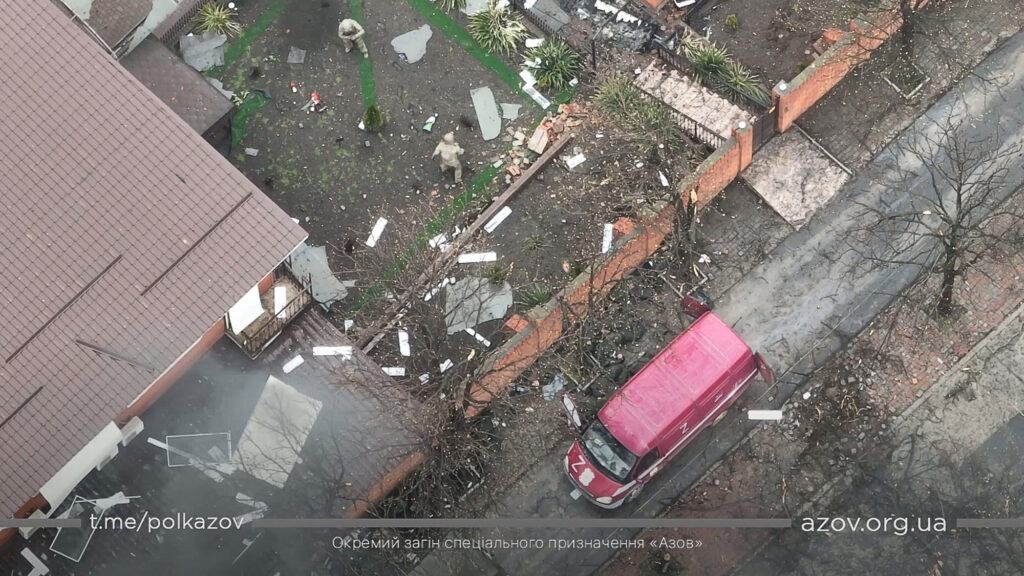
The Azov Regiment, also known as the Azov Battalion, is a notorious group of soldiers who were officially incorporated into the National Guard of Ukraine in 2014, after recapturing Mariupol from pro-Russian separatists in June that year.
The Azov Regiment is said to have begun as a far-right, neo-Nazi group that started out as an urban militia and a political party. It has since expanded and, through service to Ukraine, has been incorporated into the Armed Forces. Azov, on a national level, failed in past elections to win any seats in the Ukrainian parliament via its political branch.
Azov was originally a paramilitary militia known as the “men in black”. Its integration into Ukraine’s National Guard and the recruitment of many soldiers who were unaffiliated politically is said to have marginalised its most extreme elements and it is now often described by Western military experts as being “anti-Russian” and “ultranationalist”.
But Putin appears to have capitalised on the presence of this group in eastern Ukraine to announce his so-called “special military operation” to “de-Nazify Ukraine”, apparently painting the whole country with the same brush as the regiment.
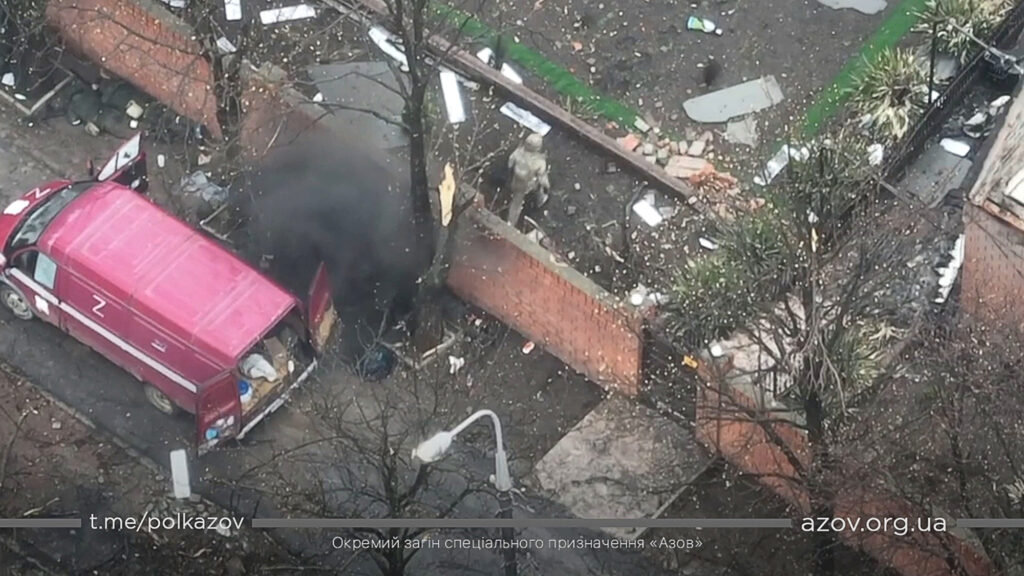
After Russian soldiers withdrew from northern Ukraine, the focus appears to be shifting to the south of the country, where a large Russian offensive is expected in the coming days, with it believed that Russia is trying to create a land bridge from its own borders all the way to the south-western port city of Odesa.
This would effectively render Ukraine landlocked and cut off from the Black Sea and international shipping.


